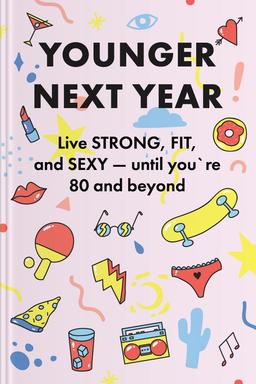You’ll learn
- Myths about getting older
- Reasons to avoid diets
- How to postpone the deterioration of your state
- Why you need both aerobics and strength training
russia has launched a full-scale war in Ukraine. Donate to support Ukraine and protect the world’s peace.

first KEY POINT
For all living things, aging comes to us all. For humans, our:• Hair turns gray.
• Maximum heart rate steadily decreases over time.
• Skin breaks down, regardless of activity levels.However, it's not something we should fear, as this process is relatively gradual. Instead, we must be more concerned with the deterioration of our state because, unlike aging, it is a choice.The common belief that aging's decline sets in around 50 is a misconception. But this doesn't have to be our future; we can live vibrantly well into our eighties and beyond by adopting healthy habits.
In the typical US lifestyle, many start their descent into aging around 55. As each year goes by, they gain more weight and become a little slower and weaker, with more pain and less mental acuity. And within a few years after 60, they end up in a nursing home.What can we do to forge a different path? Long-lasting vitality rests on several pivotal factors, such as a nourishing diet, emotional resilience, and a profound engagement with life. But the first and fundamental step is regular physical activity.The human body constantly renews itself — muscles every four months, blood cells every three, platelets every ten days, and bones every few years. In the upcoming sections, discover how to harness this renewal process through exercise and a balanced diet.
second KEY POINT
Exercise is fundamental to the human body's development because it evolved to do so. So, it is safe to say that it is the most powerful way to keep our bodies functioning correctly.Although our brains and bodies are remarkable, their intricate design wasn’t designed for modern times; it was made for life in nature, where only the fittest survived.Our ancestors thrived in an environment demanding extensive physical exertion. Daily life involved traversing eight to ten miles, often in a blend of walking, running, and sprinting, as they sought food and engaged in hunting. This constant movement wasn't just a means of survival; it signified to their bodies that all systems were functioning optimally.Our current lifestyle contrasts starkly with that of our ancestors. Today's lifestyle, filled with processed foods, screen time, commutes, and stress, is quite different from days gone by. Compromised sleep quality, exposure to constant noise, and a lack of physical exercise are also prevalent. For those who retire, the challenges shift to coping with isolation and boredom, replacing the stress of working life. This lifestyle resembles alarm bells in nature, prompting our bodies and minds to adapt in ways detrimental to our health.

Continue reading with Headway app
Continue readingfirst KEY POINT
second KEY POINT
third KEY POINT
fourth KEY POINT
fifth KEY POINT